2016 BMW X1: Car Seat Check

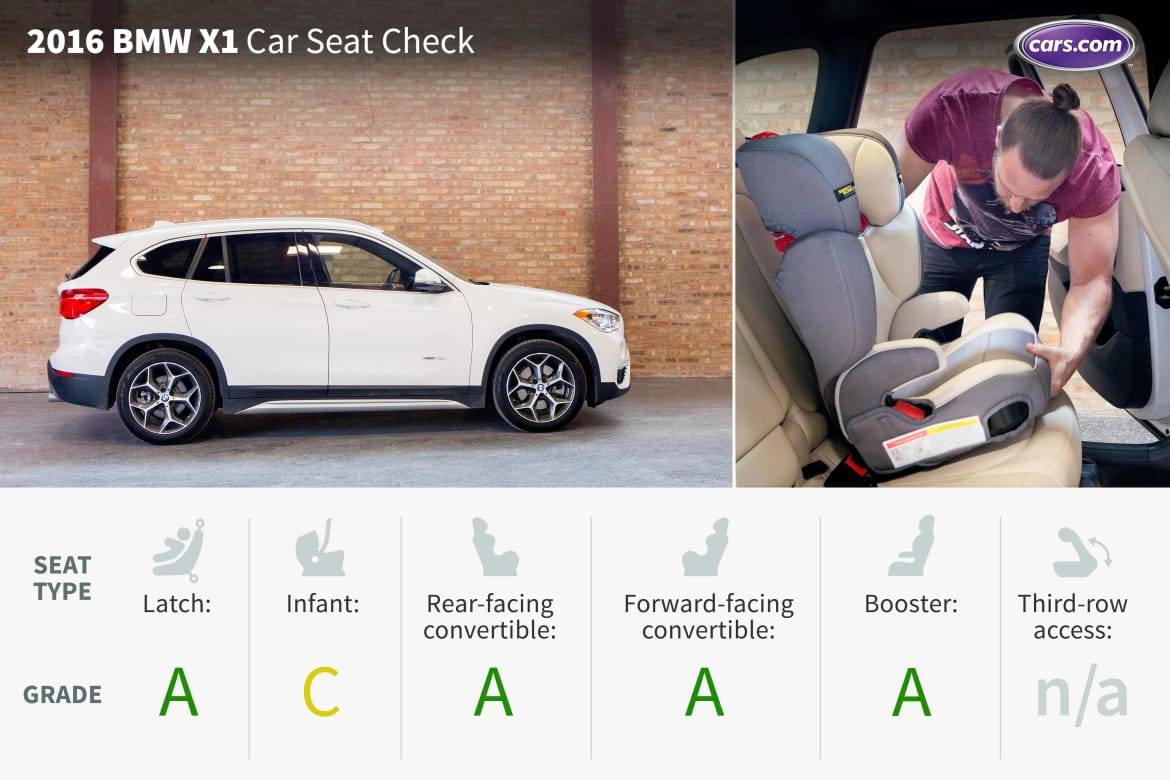
CARS.COM — BMW’s smallest SUV was redesigned for the 2016 model year and what the X1 lost in performance, it gained in utility. The five-passenger luxury subcompact ute lost its turbocharged six-cylinder engine but gained storage options and cargo space, as well as additional passenger space. The increased room is a boon for car-seat installation, with the X1 improving markedly in its grades since the last time we tested it in 2013.
How many car seats fit in the second row? Two
What We Like
- Latch access is simple. Two sets of anchors sit behind hinged plastic covers.
- In both rear- and forward-facing modes, the convertible seat was easy to install and fit well. When rear-facing, our 5-foot-6-inch front passenger had enough legroom.
- The booster seat fit well on the flat seat cushion and we did not have to raise the head restraint for a good fit. The seat belts are on stable arms, which will make them easier for children to grasp.
What We Don’t Like
- There are three top tether anchors at the base of the seatbacks but there are also several unlabeled cargo anchors nearby; this could confuse parents. Cargo anchors should never be used in place of top tether anchors.
- The infant seat installed easily but we had to move the front passenger seat all the way up and adjust the seat’s recline to an upright angle, making things terribly uncomfortable for our passenger.

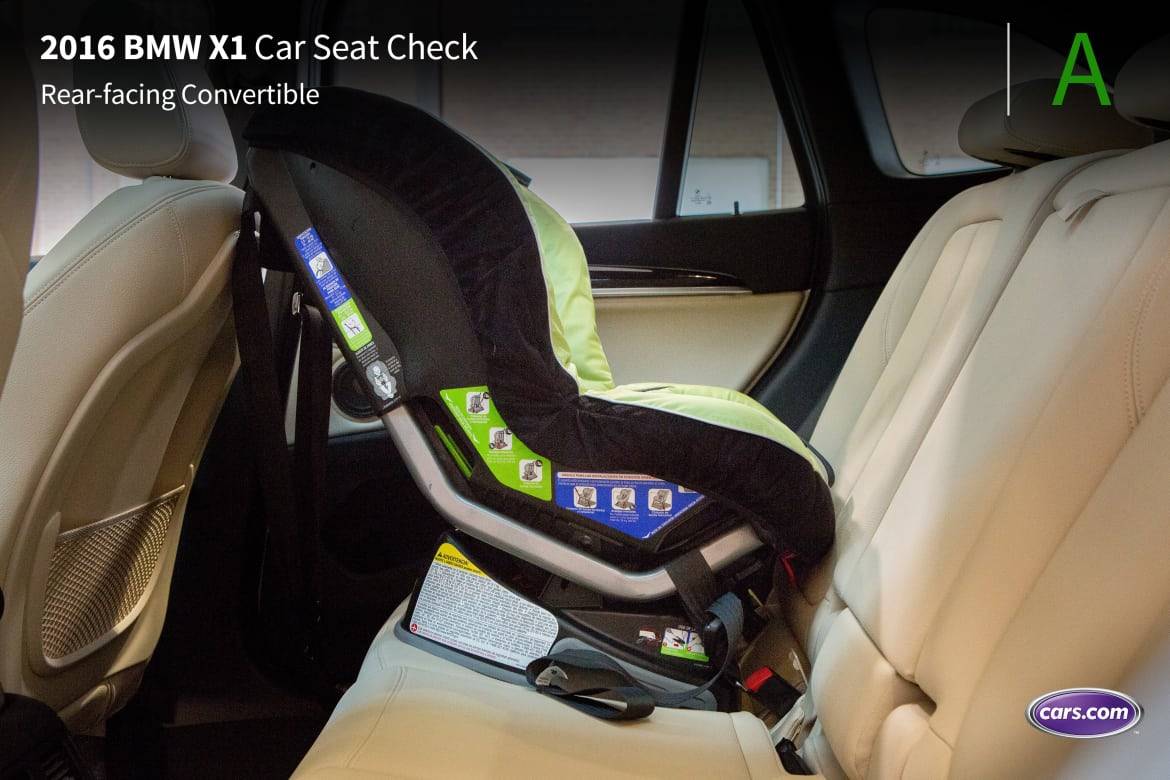
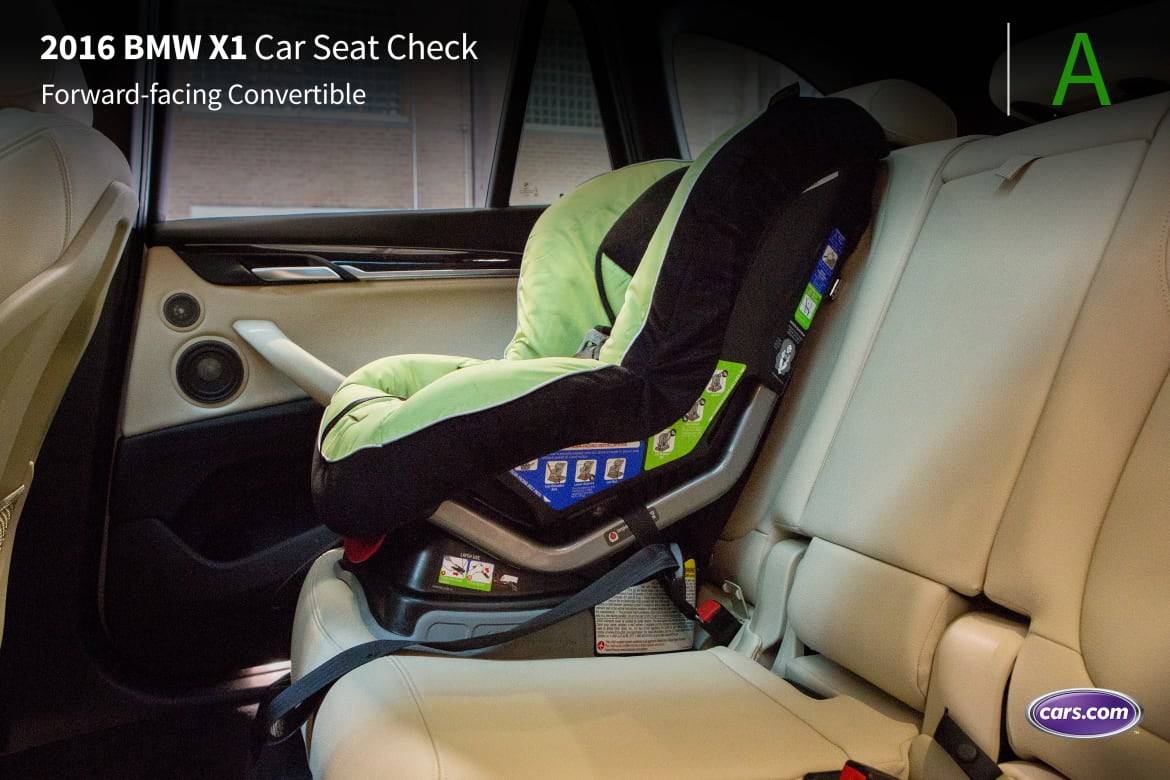
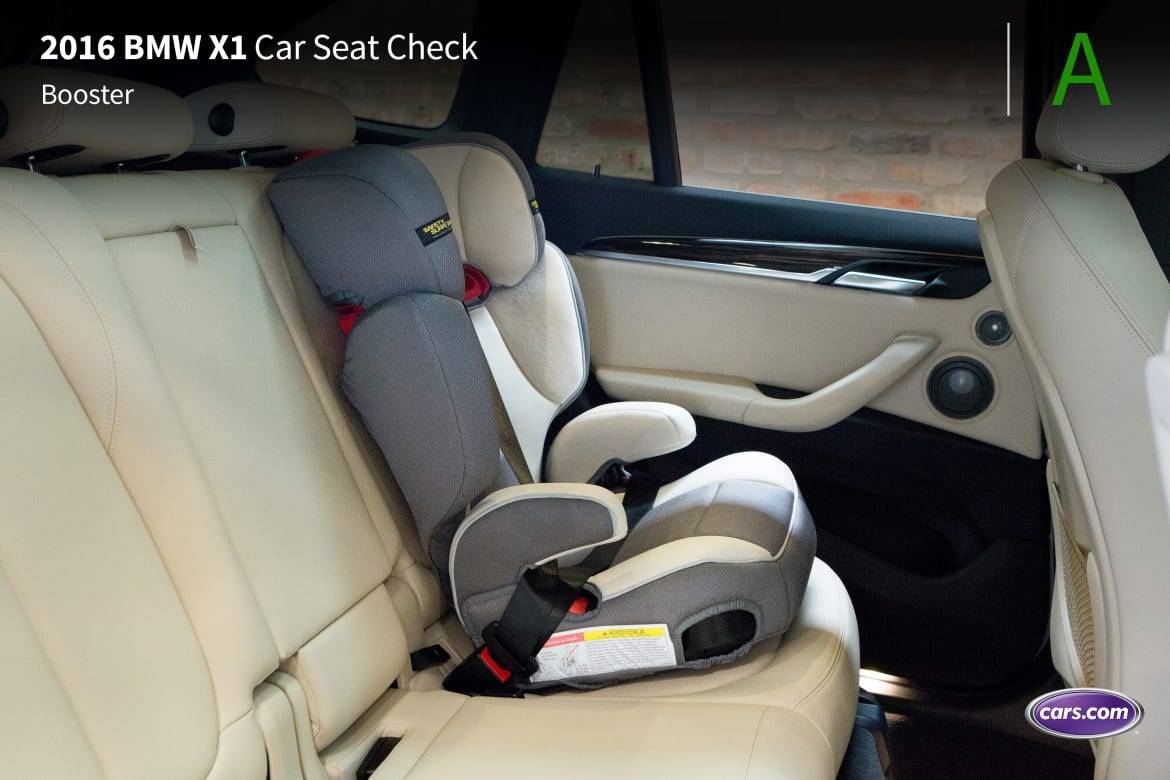




Grading Scale
A: Plenty of room for the car seat and the child; doesn’t impact driver or front-passenger legroom. Easy to find and connect to Latch and tether anchors. No fit issues involving head restraint or seat contouring. Easy access to the third row.
B: Plenty of room. One fit or connection issue. Some problems accessing third row when available.
C: Marginal room. Two fit or connection issues. Difficult to access third row when available.
D: Insufficient room. Two or more fit or connection issues.
F: Does not fit or is unsafe.
About Cars.com’s Car Seat Checks
Editors Jennifer Geiger, Jennifer Newman and Matt Schmitz are certified child safety seat installation technicians.
For the Car Seat Check, we use a Graco SnugRide Classic Connect 30 infant-safety seat, a Britax Marathon convertible seat and Graco TurboBooster seat. The front seats are adjusted for a 6-foot driver and a shorter passenger. The three child seats are installed in the second row. The booster seat sits behind the driver’s seat, and the infant and convertible seats are installed behind the front passenger seat.
We also install the forward-facing convertible in the second row’s middle seat with the booster and infant seat in the outboard seats to see if three car seats will fit; a child sitting in the booster seat must be able to reach the seat belt buckle. If there’s a third row, we install the booster seat and a forward-facing convertible. To learn more about how we conduct our Car Seat Checks, go here.
Parents should also remember that they can use the Latch system or a seat belt to install a car seat, and that Latch anchors have a weight limit of 65 pounds, including the weight of the child and the weight of the seat itself.

Former Assistant Managing Editor-News Matt Schmitz is a veteran Chicago journalist indulging his curiosity for all things auto while helping to inform car shoppers.
Featured stories
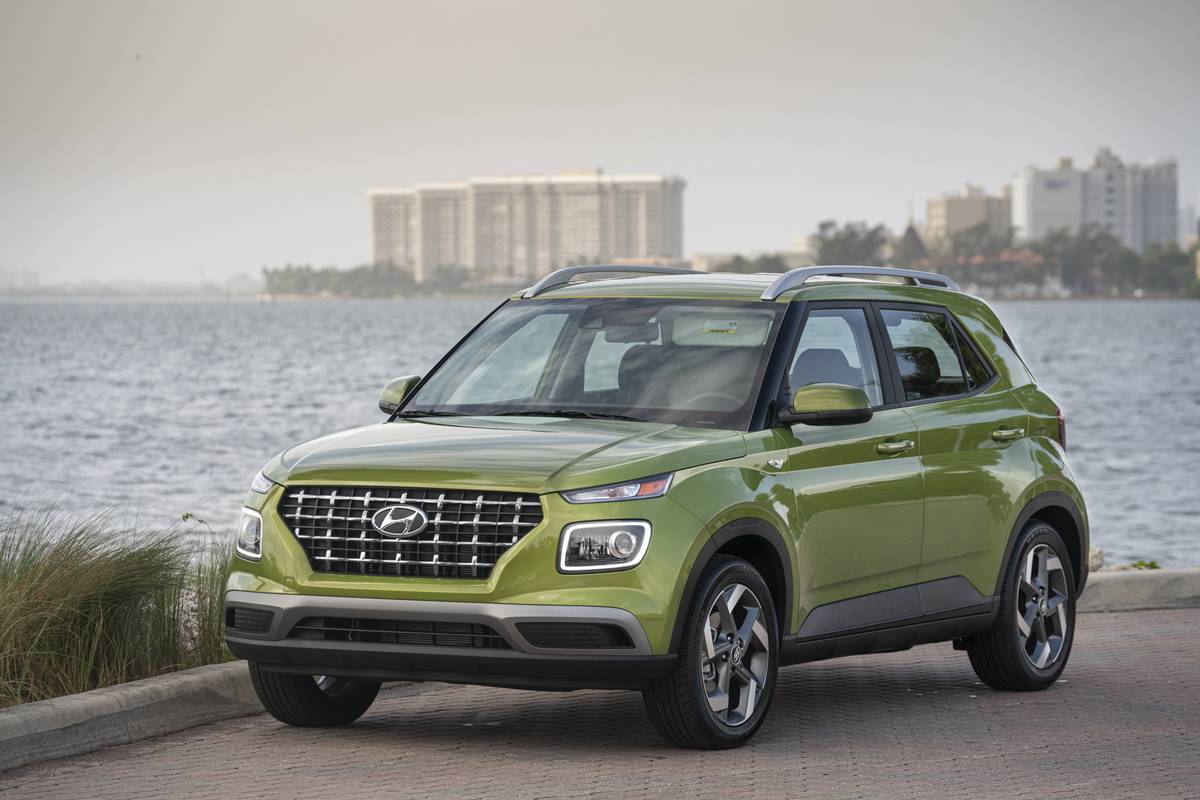
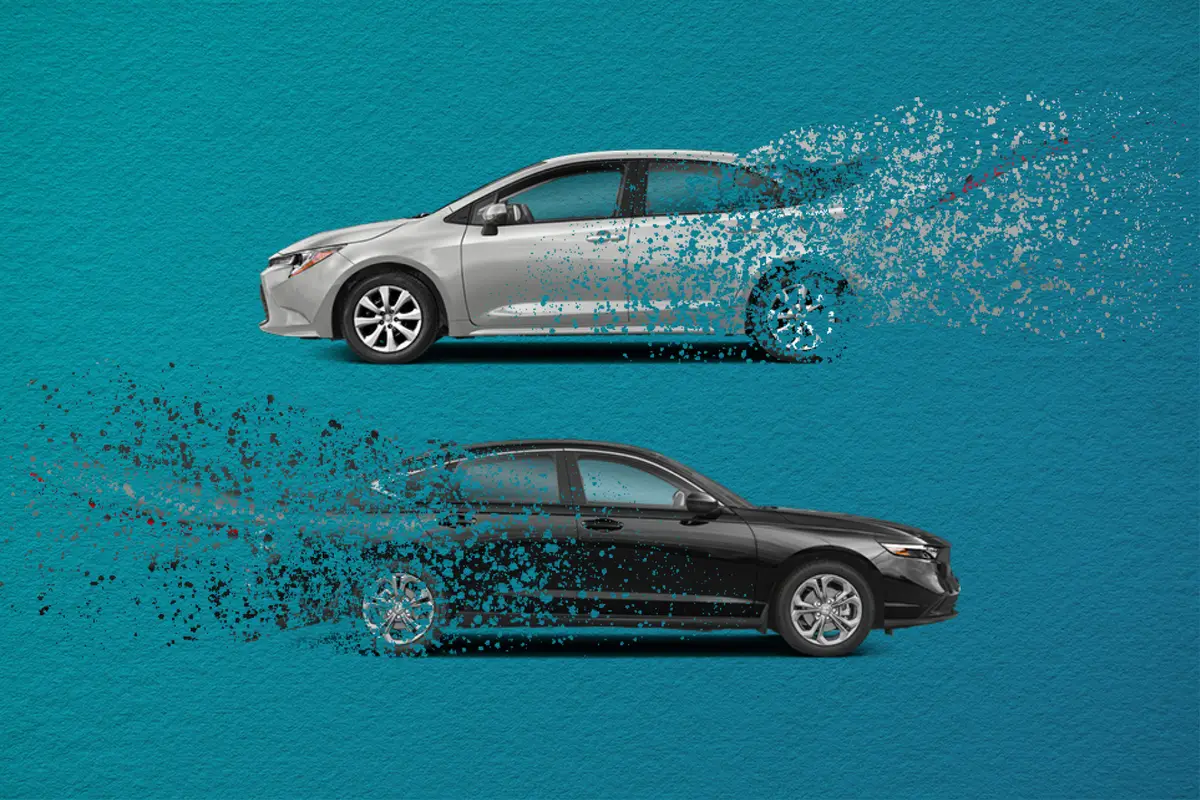
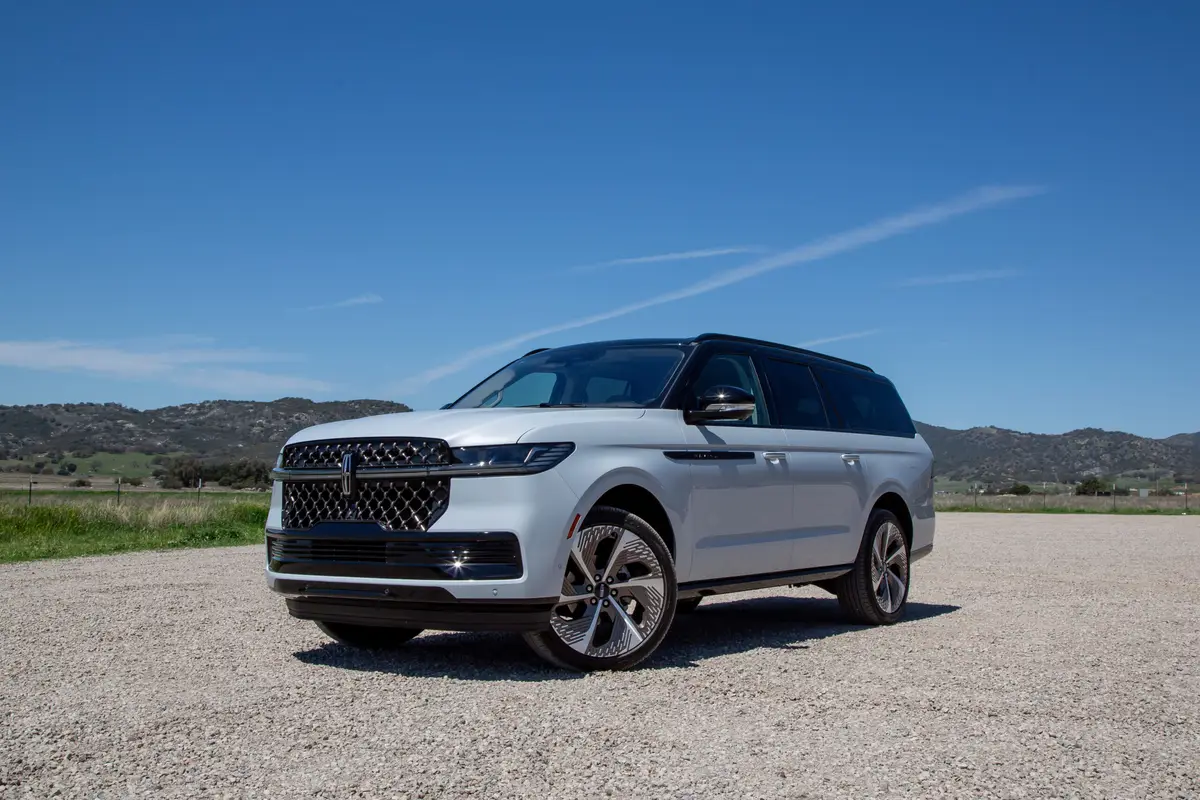
2025 Lincoln Navigator Review: Elephantine Elegance





